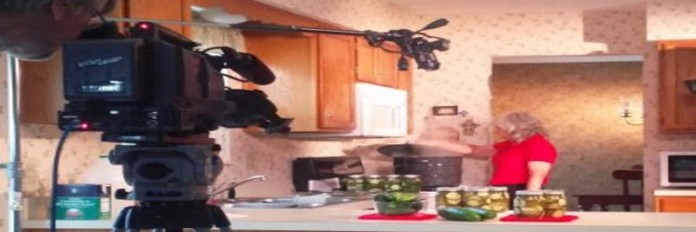COLUMBUS, Ohio — Linnette Goard has worked with Ohio State University Extension for 30 years.
“And I’ve taught more food preservation classes in the last two years than I ever did before,” she said. “People want to know what’s in their food and to control what’s in it.”
Last year, as OSU Extension’s field specialist in food safety, selection and management, Goard helped develop a video on canning crushed tomatoes in an attempt to reach more people than she could in her in-person classes.
“The response was overwhelming,” she said. “People really want to know how to can, and how to can properly.”
The result? Three new videos on canning salsa, canning pickles and freezing as a preservation method. “Freezing really is the easiest way to preserve food at home,” Goard said.
The videos will be posted online this week on OSU Extension’s Chow Line blog at u.osu.edu/chowline. Chow Line is a column on food, nutrition and food safety offered by OSU Extension and the Ohio Agricultural Research and Development Center. OSU Extension and OARDC are the outreach and research arms of Ohio State University’s College of Food, Agricultural, and Environmental Sciences.
The videos, as well as fact sheets and other Extension information about home food preservation, will be posted to the blog daily during the week. To be notified when new information is posted, anyone interested may like Ohio State University Extension on Facebook.
“We have a lot of print fact sheets on food preservation, but videos provide that strong visual component that people really appreciate when they’re looking for information on how to do something themselves,” Goard said.
And if the participants in her in-person classes are any indication, those people have a wide range of experience in home food preservation.
“Many are 30-somethings who have never canned before and know nothing about the process,” she said. “Others watched their grandma can when they were 10 years old but didn’t really know what she was doing or how she was doing it. They all want to know the proper way to preserve food.”
Even veteran canners like Goard herself could use these updates, she said.
“I grew up canning with grandma and my mom, and we processed green beans with a hot water bath,” she said. “Would I do that today? No way. We didn’t know any better. Now we know that there’s too much of a risk of botulism if you don’t use a pressure canner for green beans. That’s what can happen when you process foods incorrectly.”
Goard hopes the word gets out about the Extension videos.
“There are tons of videos on how to can on YouTube, but not all them show the proper methods,” she said. “I’ve watched lots of them and thought, ‘Oh, no.’
“We want to make sure people are using the most up-to-date food preservation practices. It’s not just what grandma used to do or how she used to do it.”












